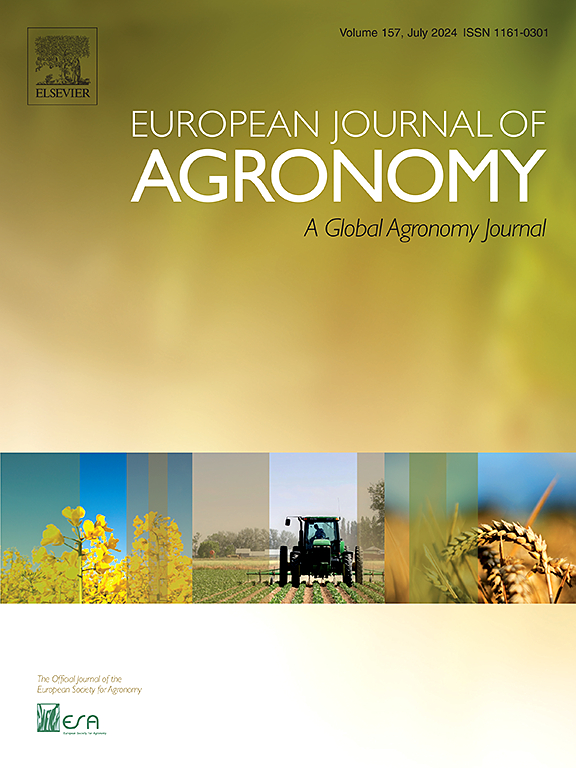Climate normals shape regional disparities of cotton yield failures compared to dominant impacts from climate extremes
IF 4.5
1区 农林科学
Q1 AGRONOMY
引用次数: 0
Abstract
Spatial co-occurring crop yield failures strongly affect crop productivity, resulting in profound socioeconomic consequences. Cotton (Gossypium hirsutum L.) cultivation in Xinjiang accounts for 91 % of China’s national cotton production, and play a critical role in the global textile industry. However, given the wide range of climatic niches for cotton cultivation in Xinjiang, the lack of a comprehensive understanding of the spatial links in cotton yield failures and their relations with climate attributes impedes the design of effective regional strategies to enhance cotton productivity synchronously. To address this, we quantified the spatial dependence of cotton yield failures and assessed how climate variations affect cotton yield anomalies across regions in Xinjiang by conducting a case study focused on cotton cultivation in North Xinjiang (NXJ) and South Xinjiang (SXJ). We employed statistical analysis combining copula theory and multiple linear regression to untangle the regional cotton yield failure and their anomalies attributed to climate normal and extremes. Our results demonstrated a significant spatial connection between cotton yield anomalies in these regions, with a recurring pattern of yield failures emerging approximately every 15 years. Moreover, yearly variations in climate attributes explained over 40 % of the observed cotton yield anomalies. Climate extremes exerted a fourfold greater impact on cotton yield anomalies compared to the weaker signals from climate normals. Nevertheless, the cumulative climate normals significantly contributed to regional disparities in cotton yield anomalies. These findings highlight the multifaceted contributions of climatic drivers to spatially compounded cotton yield failures. Measures aimed at accelerating breeding cycle against both normal and extreme climate changes, as well as implementing targeted field management practices, are essential for synchronously enhancing cotton productivity in China and addressing critical challenges within the cotton industry.
求助全文
约1分钟内获得全文
求助全文
来源期刊

European Journal of Agronomy
农林科学-农艺学
CiteScore
8.30
自引率
7.70%
发文量
187
审稿时长
4.5 months
期刊介绍:
The European Journal of Agronomy, the official journal of the European Society for Agronomy, publishes original research papers reporting experimental and theoretical contributions to field-based agronomy and crop science. The journal will consider research at the field level for agricultural, horticultural and tree crops, that uses comprehensive and explanatory approaches. The EJA covers the following topics:
crop physiology
crop production and management including irrigation, fertilization and soil management
agroclimatology and modelling
plant-soil relationships
crop quality and post-harvest physiology
farming and cropping systems
agroecosystems and the environment
crop-weed interactions and management
organic farming
horticultural crops
papers from the European Society for Agronomy bi-annual meetings
In determining the suitability of submitted articles for publication, particular scrutiny is placed on the degree of novelty and significance of the research and the extent to which it adds to existing knowledge in agronomy.
 求助内容:
求助内容: 应助结果提醒方式:
应助结果提醒方式:


